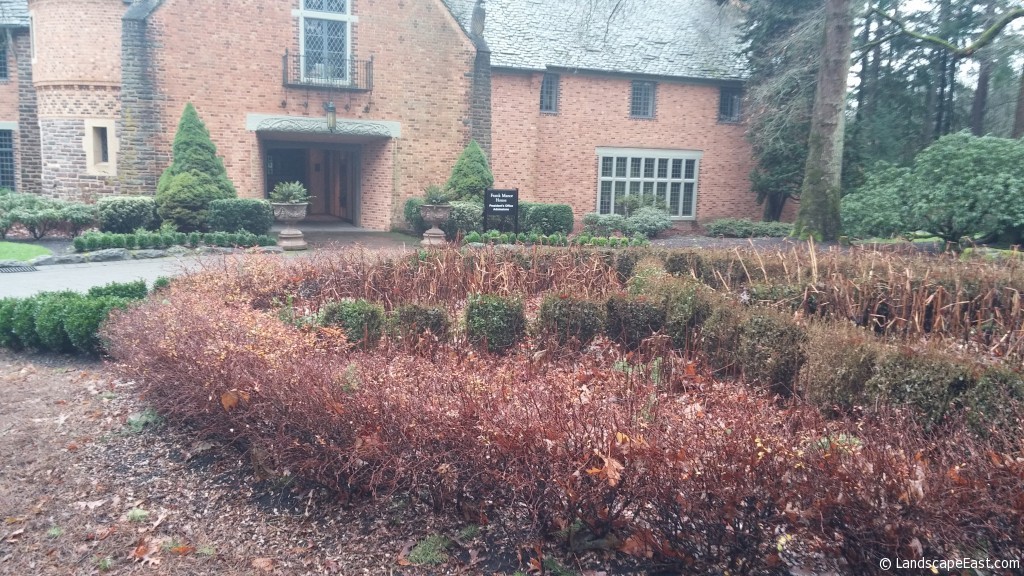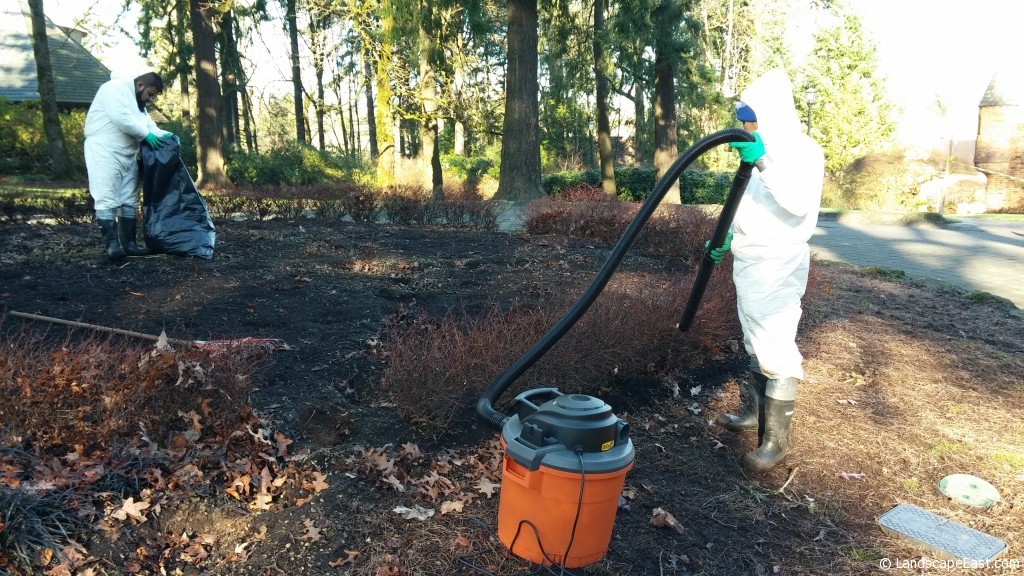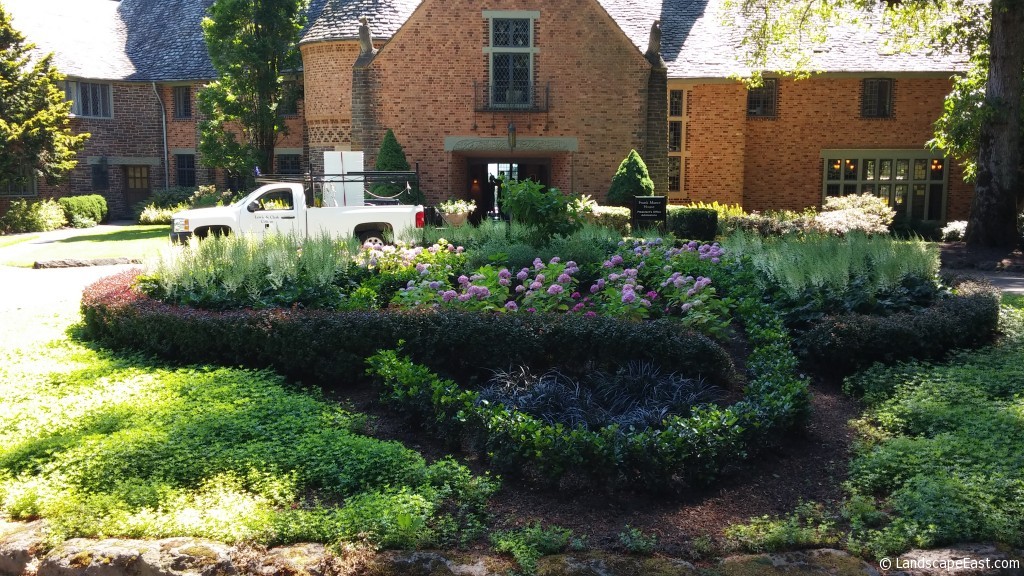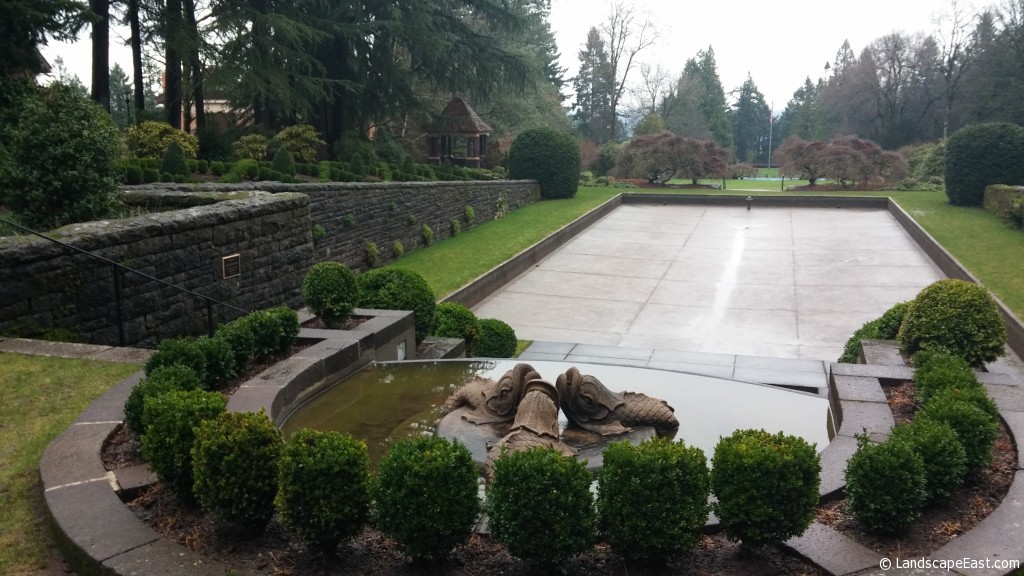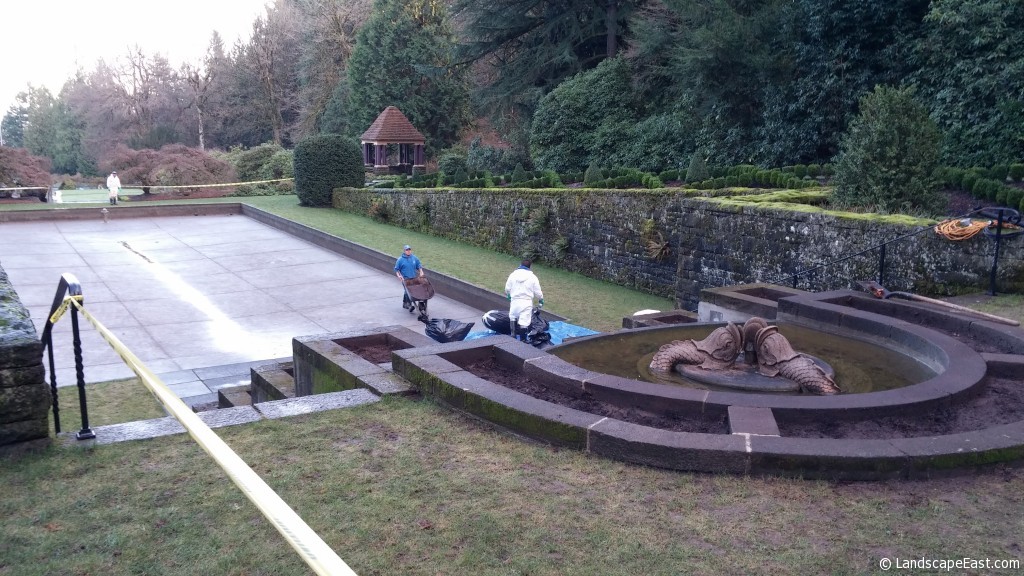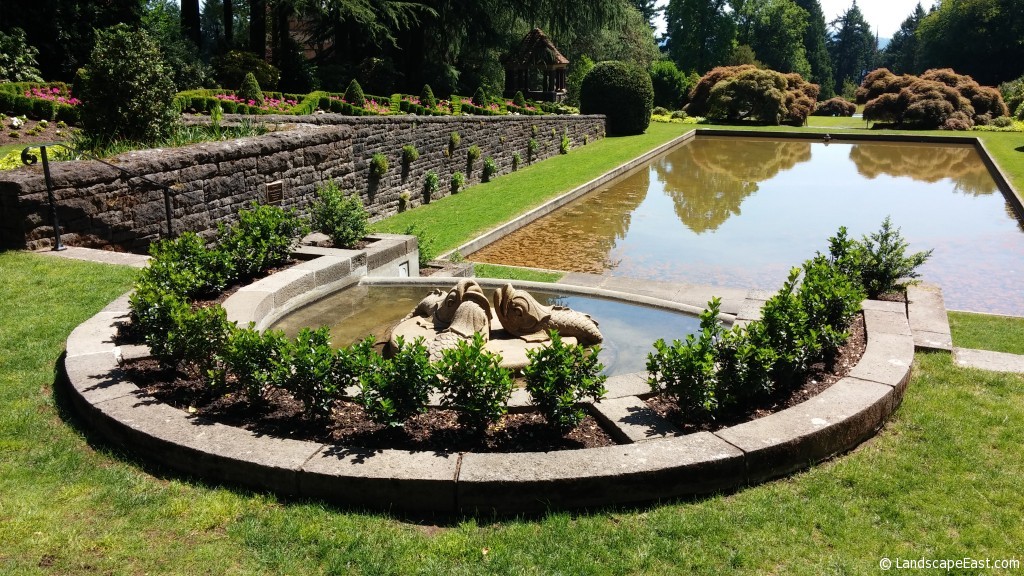Portland Landscaping Company Completes Boxwood Blight Mitigation
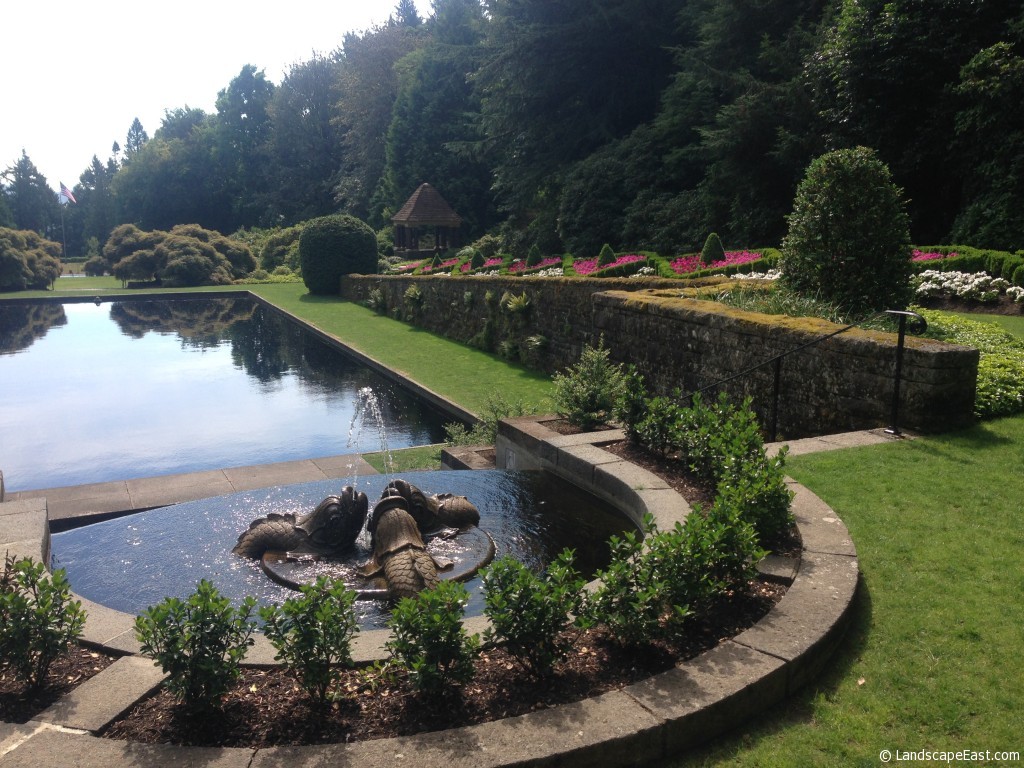 Introduced to North America in the mid-1600s by European settlers, boxwood is a low-maintenance shrub that Portland, Oregon, landscapers shape into neat hedges or mounds. During winter 2015, we were contracted for a single project that involved removing boxwoods infected with boxwood blight at Lewis and Clark College. Landscape East & West’s Portland landscaping maintenance crew worked in the college’s Three Fish and Circle Knot Gardens to mitigate the spread of the plant disease. This project was identified and its scope developed by Lewis and Clark College.
Introduced to North America in the mid-1600s by European settlers, boxwood is a low-maintenance shrub that Portland, Oregon, landscapers shape into neat hedges or mounds. During winter 2015, we were contracted for a single project that involved removing boxwoods infected with boxwood blight at Lewis and Clark College. Landscape East & West’s Portland landscaping maintenance crew worked in the college’s Three Fish and Circle Knot Gardens to mitigate the spread of the plant disease. This project was identified and its scope developed by Lewis and Clark College.
The Project
Nestled in southwest Portland’s quiet Palatine Hill neighborhood, Lewis and Clark College sits on 137 acres formerly known as the “Fir Acres” estate. Views from the campus’ landmark Frank Manor House overlook a formal garden mall that offers views of Mt. Hood and the Willamette Valley. With Douglas fir woods, nature trails and manicured landscaping, the campus is contiguous with the 645-acre Tyron Creek State Natural Area. The school’s beautiful environment made it one of the top ten “Most Beautiful Campuses” in the U.S. by publications such as “Princeton Review” and “Travel and Leisure.”
Among the roses, crawling Japanese maples and ornamental grasses, boxwood blight plagued over 200 of the campus’ shrubs, fortunately all were isolated in singular locations. The Portland landscape maintenance workers were tasked to remove the infected bushes. Lewis and Clark’s Grounds Department provided specific mitigating measures and species replacement and all work was done under the immediate direction of the Grounds Department.
See before photo below:
During Photo:
After Photo: Landscape East & West replaced the Ilex and the other landscaping additions were completed by the Lewis and Clark College ‘s Grounds Department.
About Boxwood Blight
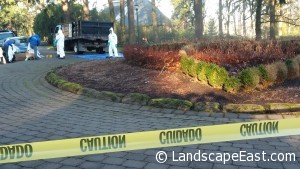 Boxwood blight is a fungal disease that European varieties of boxwood likely introduced to the U.S. While the disease is common along the East Coast, the Pacific Northwest’s first recorded incident occurred in 2011 at a Washington County nursery. In general, American boxwood varieties are the most vulnerable to the fungus.
Boxwood blight is a fungal disease that European varieties of boxwood likely introduced to the U.S. While the disease is common along the East Coast, the Pacific Northwest’s first recorded incident occurred in 2011 at a Washington County nursery. In general, American boxwood varieties are the most vulnerable to the fungus.
Cylindrocladium buxicola fungal spores spread to boxwood plants in the wind and rain. Placing infected plants near healthy plants spreads the disease in nurseries and gardens. People, animals and blight-resistant plants that touch infected boxwoods may also spread the fungus to healthy plants.
Boxwood blight can survive for up to five years on fallen boxwood leaves and other organic matter. At the time of this publication, there is no cure for boxwood blight. Other plants that boxwood blight affects include those in the boxwood family, which residential and commercial landscapes often contain. These plants include:
- Pachysandra: An evergreen perennial that’s native to parts of Asia and North America. Pachysandra plants reach about 18 inches in height and do well in darker areas, making them ideal for shade gardens and ground covers. The groundcover spreads quickly and is deer-resistant.
- Sarcococca: Also known as “sweet box” or “Christmas box,” Sarcococca is native to eastern Asia and tolerates cold weather and moist conditions well. The evergreen plants grow slowly and are wonderful during the winter as this is when they bear fragrant flowers. Some people use Sarcococca as a ground cover, as a hedge or in a shade garden. The varieties of Sarcococca that Northwest growers use are hookerana humilis and S. ruscifolia, which grow between 1.5 and 3 feet tall.
Oregon Department of Agriculture and Boxwood Blight
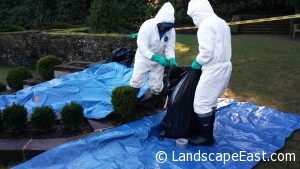 Boxwood blight easily spreads to other plants in the boxwood family. So far, the presence of the disease on the Lewis and Clark campus is the second reporting of boxwood blight in landscapes in Oregon. The Oregon Department of Agriculture (ODA) wants to ensure that the fungal disease does not spread to residential and public sites, so it created the voluntary Nursery Cleanliness Program for Boxwood Blight.
Boxwood blight easily spreads to other plants in the boxwood family. So far, the presence of the disease on the Lewis and Clark campus is the second reporting of boxwood blight in landscapes in Oregon. The Oregon Department of Agriculture (ODA) wants to ensure that the fungal disease does not spread to residential and public sites, so it created the voluntary Nursery Cleanliness Program for Boxwood Blight.
The ODA is the state agency responsible for ensuring food safety and protecting natural resources and is attempting to eradicate the disease from Oregon nurseries. It also ensures the safety of local, imported and exported plants. Its Nursery Cleanliness Program protects healthy boxwood plants and helps increase consumer confidence with standards such as:
- Buying boxwoods from nurseries that participate in cleanliness programs
- Quarantining new boxwood plants for at least 30 days
- Quarantining boxwood plants that customers or others return
- Training staff about sanitation, inspection and sample collection
- Maintaining records of boxwood shipments
- Reporting fungal infestations to the ODA
- Removing and destroying infected plants
Allowing the ODA to conduct inspections & Collect Samples Challenges & Solutions
Challenge
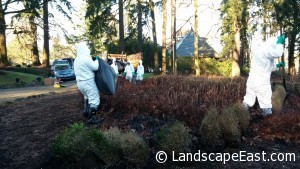 The infection of the boxwoods at Lewis and Clark was the second site in Oregon that required serious mitigation. With thousands of plants on the college campus, Lewis and Clark College developed the protocol that was needed to take special care to not spread the infection to healthy plant life.
The infection of the boxwoods at Lewis and Clark was the second site in Oregon that required serious mitigation. With thousands of plants on the college campus, Lewis and Clark College developed the protocol that was needed to take special care to not spread the infection to healthy plant life.
Solution
- Remove the infected plants.
Removing the infected boxwood plants was a serious endeavor that required the use of tarps, hazmat suits, vacuums to collect fallen leaves, and a fungicide containing hydrogen peroxide that was used on healthy plants and the soil. While working in the Three Fish Garden, we covered the fountain to prevent infected leaves from falling into the water.
We placed the contaminated plants, surrounding dirt, fallen leaves, organic debris and other waste into sealed plastic bags. The crew also took extra precautions to prevent spreading the fungus by disinfecting the truck, equipment and their boots with water and bleach.
Throughout the process, individuals from Lewis and Clark’s Grounds Department monitored our progress as we stayed in touch with the ODA.
Before Photo:
During Photo:
After Photo:
- Beautify the sparse parts of the landscape.
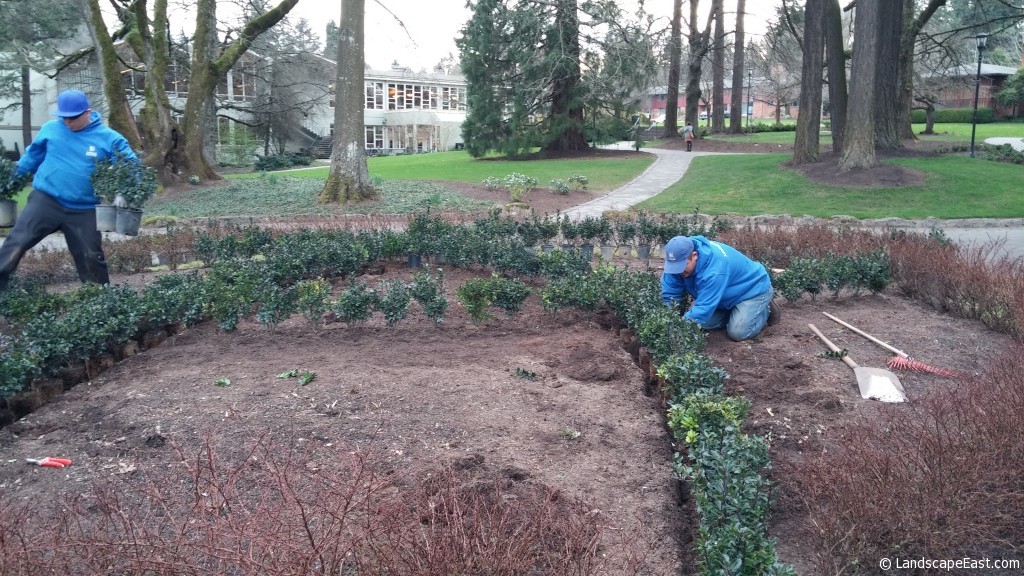 After removing the infected boxwoods and disinfecting the soil with the hydrogen peroxide solution, we replaced the top 4 inches of dirt with a soil mix and compost. Landscape East & West then replaced the infected boxwood with Ilex ‘mondo’ and Ilex ‘crenata-convex’ shrubs. These are evergreen plants that look similar to boxwood with its dense, compact leaves, but aren’t susceptible to its blight. Ilex shrubs are cold hardy, stay small, attract garden pollinators and turn a purplish color in the winter.
After removing the infected boxwoods and disinfecting the soil with the hydrogen peroxide solution, we replaced the top 4 inches of dirt with a soil mix and compost. Landscape East & West then replaced the infected boxwood with Ilex ‘mondo’ and Ilex ‘crenata-convex’ shrubs. These are evergreen plants that look similar to boxwood with its dense, compact leaves, but aren’t susceptible to its blight. Ilex shrubs are cold hardy, stay small, attract garden pollinators and turn a purplish color in the winter.
This is what Lewis and Clark College had to say about the project and working with Landscape East & West, “As responsible stewards of our environment and community, it was critical we focus on this challenge in the most comprehensive and appropriate manner to efficiently eradicate boxwood blight from Campus. Eric from Landscape East &West was a valuable partner in effectively overcoming the disease. We continue to be vigilant with our monitoring program to protect not only our property, but to ensure we do not participate in the spread of this disease to the greater Willamette Valley.”
When it comes to boxwoods and disease prevention, the ODA told my crew that it’s vital for nurseries to inspect boxwood plants for signs of an infection thoroughly. If they encounter the fungus, nursery workers should dispose of infected plants and their dirt immediately, and thoroughly clean the other plants in the area. With millions of plants shipped all over the country, boxwood blight mitigation isn’t simple, but it’s necessary to halt the spread of the fungus.
If you have diseased plants on your property that are hurting your curb appeal, contact the Portland landscapers at Landscape East & West to schedule a consultation.
 Contributing author Eric Johansson specializes in expert Portland landscaping maintenance at Landscape East & West. From irrigation to complete landscaping assessments, our team has the health of your commercial or residential space covered.
Contributing author Eric Johansson specializes in expert Portland landscaping maintenance at Landscape East & West. From irrigation to complete landscaping assessments, our team has the health of your commercial or residential space covered.

